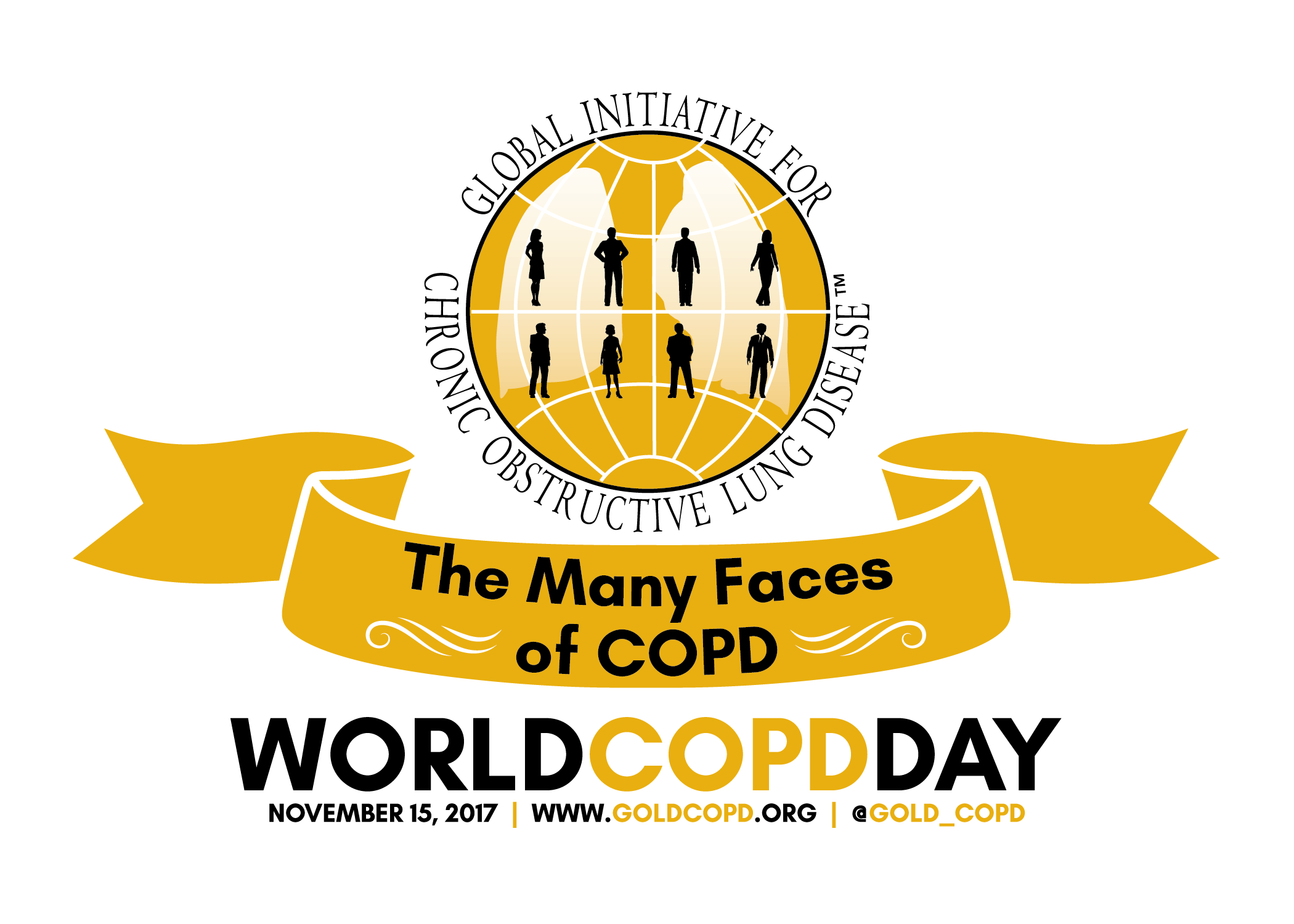
World COPD Day is organized by the Global Initiative for Chronic Obstructive Lung Disease (GOLD) in collaboration with health care professionals and COPD patient groups throughout the world. Its aim is to raise awareness about chronic obstructive pulmonary disease (COPD) and improve COPD care throughout the world.
Each year GOLD chooses a theme and coordinates preparation and distribution of World COPD Day materials and resources. World COPD Day activities are organized in each country by health care professionals, educators, and members of the public who want to help reduce the burden of COPD.
The first World COPD Day was held in 2002. Each year organizers in more than 50 countries worldwide have carried out activities, making the day one of the world’s most important COPD awareness and education events.
What is COPD?
COPD is a complex interaction between chronic bronchitis, emphysema and asthma which is primarily caused by prolonged exposure to tobacco smoke. Other risk factors such as exposure to pollution, occupational dusts and chemicals.
This video explains the complex process involved in COPD.
As Always Exercise is Crucial
Encouraging patients with COPD to stop smoking is critical to their success and outcomes in terms of mortality and lung function but a driver towards this change is exercise. Regardless of smoking cessation or not, exercise plays a crucial role in enabling quality of life in those with COPD and has been well documented to do so. This article could linger on the point of exercise for ever but the focus should be about something often overlooked. This being inhaler technique.
The Trouble with Inhaler Techniques
As this WSJ report explains inhaler technique is fraught with multiple steps and often rate, depth and timing of breath are often incorrect which means LABA and SABA inhalers are made redundant by the user and this has multiple implications in the care of the individual.
The correct technique, as shown below, is essential to those using inhalers. This week let’s make sure we are aware of the correct technique so that we enable our patients to independently manage their exacerbation. Oh, or use a spacer!
No comments:
Post a Comment